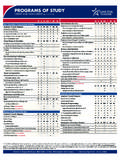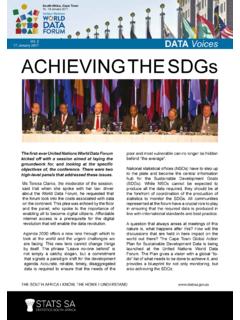Transcription of Space Explorers Cover Page - Texas Space Grant Consortium
1 Space . Explorers . Space Explorers A Space Exploration Program for Middle School Youth A School Enrichment Project Space Explorers is an interdisciplinary Space exploration education curriculum designed for middle school youth funded by the Texas Space Grant Consortium . The curriculum includes lessons for use in mathematics, language arts, social studies, science, computer, theater, physical education, and art classes. Goal: Students will broaden their knowledge and comprehension of Space exploration through interactive, hands-on learning activities. Objectives: 1. Space Exploration activities will meet suggested TEKS and SCANS objectives identified by grade level. 2. Students will learn ten vocabulary words related to Space exploration. 3. Students will increase knowledge in life science, remote sensing, orbital mechanics, and Space exploration in general.
2 Audience: Fifth to eighth grade middle school students. Delivery Methods: The curriculum is divided into four content areas: Overall Introduction to Space Exploration, Life Sciences, Remote Sensing, and Orbital Mechanics. Activities are designed to be part of an interdisciplinary program. Possible classroom organization methods include whole classroom instruction, cooperative groups, individual tasks, and learning centers. Teachers in grade level teams may choose to work cooperatively for a grade level thematic unit. Materials: Descriptions for materials needed to implement each experiment are listed at the beginning of each teaching plan. Agent Education/Support: Training is available upon request from the Texas Space Grant Consortium or your local County Extension Service. Evaluation: Evaluation methods are included in the appendix.
3 Developed by: Margaret Baguio Regan Normand Travis County Extension Agent Middle School Teacher 4-H & Youth Development Johnson City Calina Seybold Texas Space Grant Consortium Outreach Coordinator Graphics: Brandon Ray Doreck SpaceExplorers 1. Introduction: Space Explorers Texas Space Grant Consortium Activities Overview I. Introduction Page Number Description 1 Introduction to Space Explorers 2-3 Activities Overview 4 K - W - L Strategy 5 Cooperative Activity: Jobs in Space 6 Web: Introducing an Activity 7 Subject Icons II. Introduction to Space Exploration Grade Page Activity Subject Areas Level Number S M SS L C FA PE H. 5 8 8 9 Creating a Time Capsule . 5 8 10 12 International Cooperation . 5 8 13 15 Stellar Theory . 5 8 16 21 Abort, Launch, It's A Go! . 5 8 22 28 Spinoffs . III. Life Sciences Grade Page Activity Subject Areas Level Number S M SS L C FA PE H.
4 5 29 32 Nutrition in Space . 5 32 38 Lunchtime . 6 39 43 Is It Soup Yet? . 6 44 46 Lung Model . 5 6 47 51 Recycling on the Moon . 7 52 54 Exercise & Other Recreation . 7 55 56 Sleeping in Space . 7 57 58 Weightlessness .. 7 8 59 62 History of Int'l Cooperation . 8 63 68 Shuttle Spacesuits . 8 69 73 Mission Design Personnel . 8 74 77 Aging . SpaceExplorers 2. Introduction: Activities Overview Texas Space Grant Consortium IV. Remote Sensing Grade Page Activity Subject Areas Level Number S M SS L C FA PE H. 5 78 83 Light Energy . 5 84 89 Light Telescopes . 6 90 91 Venus Sky Box . 7 92 96 Satellite Orbits . 8 97 99 Mapping . V. Orbital Mechanics Grade Page Activity Subject Areas Level Number S M SS L C FA PE H. 5 100 114 Toys in Space . 5 115 117 Creating a Space Journey . 6 118 120 Experimenting with Gravity.
5 6 121 125 It's A Blastoff! . 6 126 129 Glider, Flying Saucer, Plane . 6 130 131 Making Space Stations . 7 132 134 Orbits . 7 135 137 Circumference . 7 138 141 Orbit Crossword . 7 142 144 Orbit Word Search . 8 145 147 Mission Design Shuttle . 8 148 163 Bottle Rocket . 8 164 166 Asteroid Impact . VI. Evaluation Page Number Description 167 K - W - L Strategy Evaluation 168 169 Retrospective Pretest 170 Rubric VII. Appendix Page Number Description 171 176 Space Glossary 177 Texas Essential Knowledge and Skills Info Sheet 178 184 National Education Standards 186 NASA Articles SpaceExplorers 3. Introduction: Activities Overview Texas Space Grant Consortium K - W - L Strategy Introduction Tell students that our topic is Space Exploration. Ask them to discuss what they know about exploration in Space .
6 Display a K-W-L chart on the overhead, and explain the three parts: K . What I Know, W What I Want to Know, and L What I Need to Learn. Mention that we will complete this form at the beginning of the Space Exploration unit and again upon completion. Space Exploration What I Know What I Want to Know What I Need to Learn This strategy may be used for any topic within this broad unit. Also, it may be used as an information individual assessment, in which each student writes his/her own responses for each of the three columns. For Evaluation, see form located in the Appendix. SpaceExplorers 4. Introduction: K W L Strategy Texas Space Grant Consortium Cooperative Activity Jobs in Space Exploration Curriculum Teachers may wish to use this activity for career exploration when completing any classroom activity in this curriculum.
7 It may be used as an Introduction to the activity, Requirement for group activities, or as an Organizing guide for an activity. 1. Mission Controller (Teacher). 2. Pilot (Facilitator/Leader). 3. Copilot (Recorder). 4. Crew Chief (Organizer/Liaison with Mission Controller). 5. Flight Engineer (Materials Manager). Flight Checklist 1. Everyone should actively participate in the activity. 2. Be considerate of each group member. 3. Ask others in your group to explain their thinking and work. 4. Help any group member who asks a question. 5. Recognize that it's acceptable to disagree with others in the group. 6. In the final analysis, everyone in the group should agree on the process/solution/product. 7. Ask the Mission Controller for assistance only when everyone in the group has the same question.
8 SpaceExplorers 5. Introduction: Cooperative Activity Texas Space Grant Consortium Creating A Web: Introducing an Activity In an oral discussion initiated by the teacher, students talk about what they know about orbits, for example. The teacher lists all phrases/facts in the circles and adds his/her own concepts. This serves as a springboard for the unit or topic. Orbit SpaceExplorers 6. Introduction: Creating A Web Texas Space Grant Consortium Subject Icons Physical Science Education (S). (PE). Theater Math Arts (M). (TA). Social Health Studies (H). (SS). Language Fine Arts Arts (LA) (FA). Computer Technology (C). SpaceExplorers 7. Introduction: Subject Icons Texas Space Grant Consortium INTRODUCTION. TO. Space . EXPLORATION. Creating a Time Capsule Grade Level: 5-8 Suggested TEKS. Language Arts - Social Studies - Time Required: 30 - 45 minutes Art - Computer - Suggested SCANS.
9 Countdown: Writing paper Interpersonal. Interprets and Communicates Information National Science and Math Standards Pencils Science as Inquiry, Physical Science, Earth & Space Science, Science & Technology, History & Nature of Science, Measurement, Observing, Communicating Ignition: For decades, Space colonies have been the creation of science fiction writers. However, with world population growing at an alarming rate, the concept of a second home in Space could very likely become a stark reality. Already, a number of visionary scientists have drawn up plans for off-earth habitats. Biosphere II near Tucson, Arizona is an example. Additionally, NASA has future plans for a mission to Mars in the next 20 years. It certainly appears that earth will not always be our home. With this in mind, ask the students to consider the scenario suggested next in "Liftoff.
10 ". Liftoff: You will have the opportunity to bury a time capsule, a sealed and durable box, which will be opened after one hundred years. Future discoverers of the box will be able to guess from the contents what your life was like 100 years before their time. Below are six different categories. For each category, choose an object that would best represent it. Keep in mind that you may choose items like photographs, scrapbooks, films or videos, books, newspapers, miniature models, and other favorite mementos. Describe your object in detail, and tell why you think it would be a good choice for a time capsule. The categories are yourself, your school, your city, your country, transportation, and communication. Once students have completed their lists, ask them to share their favorite items. Discuss the categories of transportation and communication.



